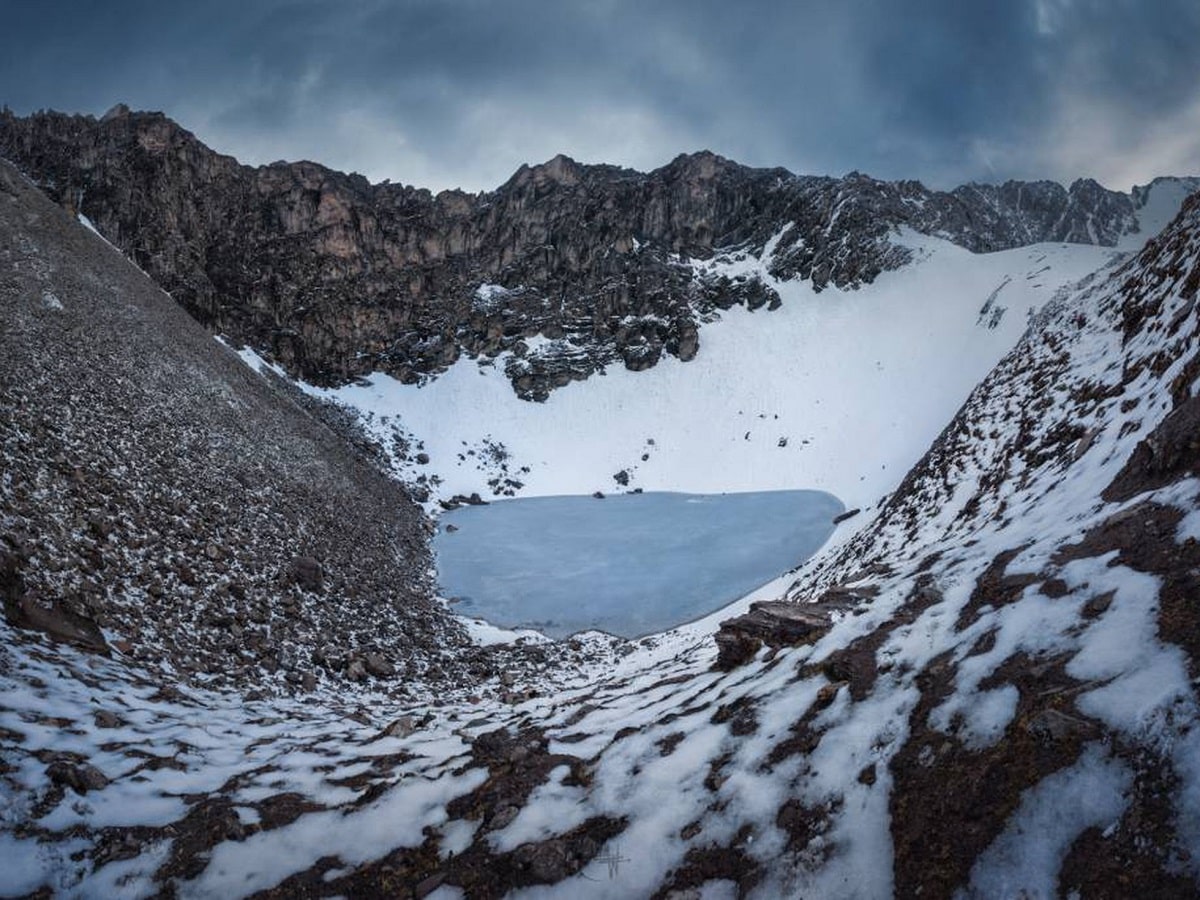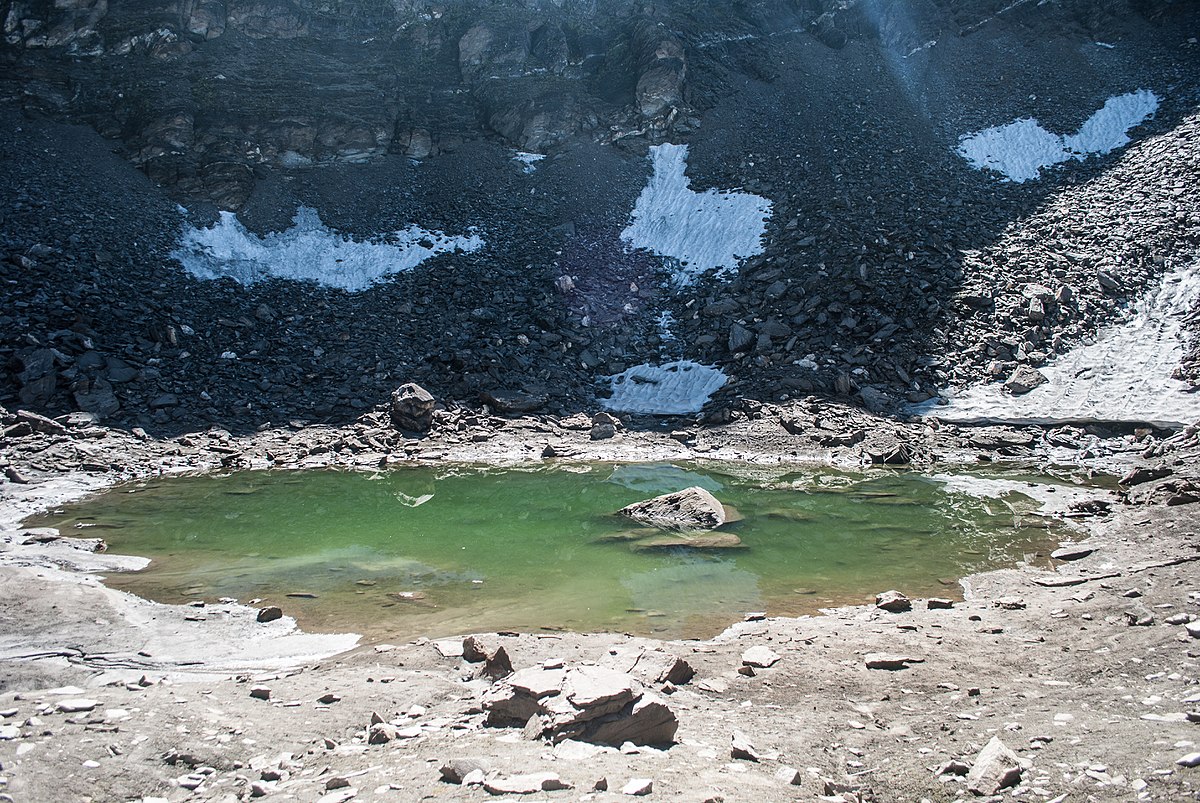
Our planet is full of curious things that attract a lot of attention and that are difficult to explain. One of these things is Skeleton Lake. It is an area found in the Himalayas that is full of human bones. There are many theories and studies that have been carried out on this lake.
For this reason, we are going to tell you all the curiosities, evidence and studies that there are about Skeleton Lake.
Skeleton Lake Story

In 1942, during World War II, an Indian ranger named Hari Kishan Madhwal stumbled upon an important discovery while traveling deep in the Himalayas. In the valley between the mountains, at an altitude of 4.800 meters, he saw a lake with hundreds of human skeletons floating in it. It is Roopkund Lake in Uttarakhand, India, an iconic place in Indian culture and an ancient setting for mythological stories.
At first, authorities investigating the discovery believed the skeletons belonged to Japanese soldiers who had infiltrated Indian Territory to fight British settlers. However, the skeletons were so deteriorated that they concluded that they had been there much longer.
At that time, different assumptions were considered. One of them linked the event with the Nanda Devi Raj Jat pilgrimage, a three-week trek still used today to worship Indian deities. Another is that the corpses belonged to a great military expedition of the XNUMXth century that ended lethally, but finding so many corpses of women, women who could not enlist in those years, the idea failed. Fractures were found in the skulls of the bones during an autopsy, and the investigation concluded that they died in a major hail storm, Outdoor magazine reported.
"The remains of these people do not belong to a single population somewhere in India, but to people living across the subcontinent."
Now, more than 70 years later, new research published in Nature Communications contradicts that latest theory, offering a clue as to why so many men and women are dying at Roopkund Lake, dubbed Skeleton Lake. A more plausible explanation.
Causes and origin of Skeleton Lake

For the study, the researchers applied radiocarbon dating to genetically analyze 38 remains found in the lake, ultimately finding out the true age of the bones and how they got there. "Originally, the results pointed to bones dating to the XNUMXth century, but we later found that this was not the case," said Éadaoin Harney, lead author of the study and a doctoral student in the Department of Organic and Evolutionary Biology at Harvard University. The bodies in the lake did not die in a single catastrophic event, but at different ages. "Some have been around for hundreds of years, and some have been around for thousands of years."
The greatest achievement of the researchers has been to demonstrate the enormous capacity of ancient humans to travel such long distances.
Genetic analysis showed that the remains belonged to three distinct groups, from South Asian populations more than 1.000 years ago to Greek and Cretan inhabitants 200 years ago. The third group had only one East Asian. In total, 23 bodies came from South Asia and another 14 from the Mediterranean.
“South Asian remains have a very diverse lineage,” explains Haney. "They do not belong to a single population that originated somewhere in India, but to people who live throughout the subcontinent." The results of the isotopic analysis also showed that each followed a different type of diet. As for how they died, Haney and his team still don't know the real reason.
"The only clue we have is that Lake Roopkund is in the middle of a pilgrimage route that has been used for the past century," the researchers said. Why are these ruins so old and that route doesn't even exist? "We are still confused and need more information to determine the exact nature of all these deaths," he concluded.
Since this is an area with the harshest and most rugged terrain, the scientists also tested their theory that they may have been killed by the effects of some hard material, be it a severe hail storm or an accidental rockfall. The greatest achievement of the researchers, in addition to trying to discover the cause of death (which is not yet clear), is to demonstrate the enormous capacity of humans to travel such long distances in ancient times, given the remoteness of the Asian subcontinent. "We know that there are always great migrations, but this makes us rethink their importance throughout history," concludes Haney.
Curiosities

The first group consisted of 23 people whose ancestors were related to the modern population of India, who came from many different groups and lived around AD 800. The second group (specifically 14) died in the XNUMXth century, and genetics suggests that their close relatives live today in the eastern Mediterranean, more specifically in Greece and Crete.
But what were travelers from the Mediterranean region of the Ottoman Empire doing two centuries ago in the Himalayan lagoons at more than 5.000 meters above sea level? One might think that the remains of these foreigners may be the descendants of the soldiers who conquered the region with Alexander the Great centuries ago, but their DNA analysis does not document genetic admixture that should have occurred more than a thousand years ago in India. Finally, in the third group, there is only one person of Southeast Asian descent, who also lived in the XNUMXth century.
According to Ayushi Nayak of the Max Planck Institute for the Science of Human History, reconstructing the stable isotopes found in the bones allows us to learn more about the diets and habitats of these people, while also confirming the existence of multiple distinct groups. , because the skeletons belonging to individuals associated with India showed a highly diverse diet, suggesting that they belonged to distinct socioeconomic groups in South Asia. By contrast, people of Mediterranean descent seem to have little in their diets with millet, a grain native to India.
According to the researchers, religiously motivated travel seems to be another plausible explanation: "Pilgrimages to these lakes, or even to the valleys or peaks of the region, have been frequent for centuries, so we think it is most likely that leftovers end up there. However, despite the large number of Roopkund-like Himalayan lakes of religious significance, no other known human remains have been found around it.
I hope that with this information you can learn more about Skeleton Lake and its characteristics.
It is interesting for me to know so much HISTORY that our Planet Earth has still unknown and we are traveling through the beautiful Universe and we have so much to discover. Greetings